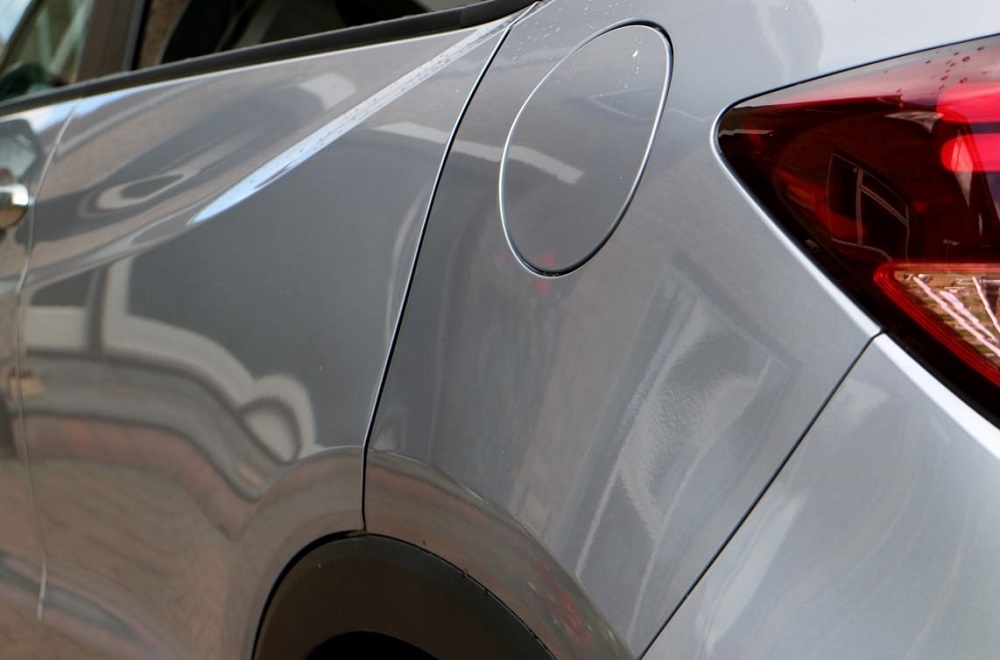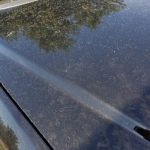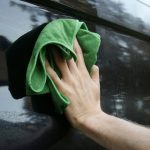In the intricate world of automotive detailing, where each gleaming surface tells a story of meticulous care, a common query frequently emerges: Will a clay bar remove ceramic coating? This isn’t just a question; it’s a quest for a delicate equilibrium between preserving a vehicle’s aesthetic charm and ensuring the longevity of its protective shield.
Understanding Ceramic Coating
The Essence of Ceramic Coating
At the heart of this exploration lies the essence of ceramic coating—a liquid polymer meticulously applied to a vehicle’s exterior. This coating isn’t just cosmetic; it’s a formidable shield against the relentless assault of environmental contaminants. It enhances the vehicle’s sheen and adds an extra layer of defense.
How Ceramic Coating Works
Ceramic coatings chemically bond with the factory paint, creating a protective hydrophobic layer. This not only repels water but also resists contaminants like bird droppings, bug splatter, and road salts. The result? A car that gleams effortlessly, requiring less frequent washes.
The Clay Bar Technique
Decoding the Clay Bar
Now, let’s dive into the world of clay bars—an unsung hero in the detailing toolkit. A clay bar is a pliable compound designed to lift contaminants from the paint surface. Its use has been synonymous with achieving that coveted glass-like finish.
The Art of Clay Bar Detailing
When applied with finesse, a clay bar glides over the paint, picking up impurities embedded in the surface. Picture it as a spa day for your car, where it emerges with a rejuvenated, silky-smooth exterior.
Will Clay Bar Harm Ceramic Coating?
The Delicate Coexistence
The central concern remains: does the gentle caress of a clay bar compromise the robust shield of ceramic coating? According to detailing connoisseurs, the answer leans towards a harmonious coexistence. The clay bar’s effectiveness is largely due to the fact that it works on contaminants without disturbing the integrity of the ceramic layer.
Balancing Act: Frequency and Pressure
Yet, like any relationship, the balance is delicate. Frequent or overly vigorous clay bar sessions might, over time, wear down the ceramic coating. Striking the right balance involves a meticulous understanding of both the frequency of use and the pressure applied.
Tips for Safe Clay Barring on Ceramic-Coated Cars
The Lubrication Ritual
- Use a Lubricant: Before the clay bar makes contact, a generous application of lubricant is essential. It reduces friction, allowing the clay bar to glide effortlessly and do its job without causing unintended abrasion.
Feather-Light Pressure
- Light Pressure: The golden rule is to let the clay bar do the work. Avoid exerting excessive pressure, allowing it to lift contaminants without compromising the ceramic coating.
Regular Maintenance
- Scheduled Inspections: Carve out time for periodic inspections. Regularly scrutinize the condition of your ceramic coating, catching any signs of wear early on.
Fortify the Shield
- Top-Up Coating: Consider periodic top-up applications of ceramic coating. This not only addresses any wear but also reinforces the protective layer, ensuring your vehicle’s longevity.
Choosing the Right Clay Bar
- Opt for Mild or Medium Grade: Not all clay bars are created equal. Choose a mild or medium-grade clay bar to ensure effective cleaning without unnecessary abrasion.
When to Exercise Caution
Signs of Wear
If you notice diminishing water beading, a decline in the once-vibrant shine, or subtle imperfections, it’s time to exercise caution. Consider a professional inspection to evaluate the condition of your ceramic coating.
Expert Tips for Safely Using Clay Bar on Ceramic-Coated Cars
Car enthusiasts understand the delicate dance required to maintain the beauty of a ceramic-coated vehicle. While the benefits of using a clay bar are undeniable, it’s crucial to approach the process with finesse to avoid unintended consequences. Here are some expert tips to ensure you get the most out of your detailing sessions without compromising your precious ceramic coating.
1. Mindful Inspection
Before diving into clay bar action, carefully inspect your ceramic coating. Look for any signs of wear, unevenness, or imperfections. Identifying issues early on allows for targeted and effective treatment. (See Also: How to Remove Duct Tape Residue from Car Interior: Ultimate Guide)
2. Choose the Right Clay Bar
Opt for a mild or medium-grade clay bar specifically designed for use on clear-coated surfaces. This ensures effective cleaning without risking damage to the ceramic coating.
3. Lubricate Liberally
Never underestimate the power of lubrication. Before sliding the clay bar over your car’s surface, generously apply a high-quality lubricant. This not only enhances the bar’s effectiveness but also minimizes the risk of scratching.
4. Work in Sections
Divide and conquer. Rather than attempting to tackle the entire vehicle at once, work in manageable sections. This allows for better control and ensures that each area receives the attention it deserves.
5. Gentle Pressure is Key
Let the clay bar do the heavy lifting. Applying excessive pressure can lead to unintended consequences, potentially compromising the ceramic coating. A gentle touch with consistent strokes is the way to go.
6. Frequent Lubrication Checks
As you work through different sections, periodically check the lubrication levels. If it starts to dry out, reapply the lubricant to maintain a smooth and friction-free clay bar experience.
7. Avoid High Temperatures
Claying your car under the scorching sun isn’t just challenging for you; it’s tough on your vehicle too. High temperatures can cause the lubricant to evaporate quickly, making the process less effective. Opt for a shaded area or choose a cooler time of day for your detailing endeavors.
8. Post-Clay Inspection
Once the clay bar has done its job, take a moment for a thorough post-clay inspection. Ensure that all contaminants have been effectively removed, and the ceramic coating remains intact.
9. Consider Top-Up Coating
If your ceramic coating shows signs of wear after clay barring, consider applying a top-up coating. This not only addresses any potential vulnerabilities but also fortifies the protective layer.
10. Professional Inspection
When in doubt, seek professional guidance. A periodic inspection by detailing experts can provide valuable insights into the condition of your ceramic coating and any necessary maintenance or reapplication. (See Also: How to Get Mouse Smell Out of Car Vents: Effective Tips and Tricks)
These expert tips, when incorporated into your detailing routine, will help you navigate the delicate balance of using a clay bar on a ceramic-coated car, ensuring your vehicle continues to turn heads with its flawless sheen.
Frequently Asked Questions About Using Clay Bar on Ceramic-Coated Cars
As car enthusiasts delve into the world of ceramic coatings and detailing, questions about the compatibility of clay bars with these protective layers inevitably arise. Here, we address some common queries to provide clarity and guidance on incorporating clay bar treatments into your ceramic-coated car care routine.
1. Can I use any clay bar on my ceramic-coated car?
Choosing the right clay bar is crucial. Opt for a mild or medium-grade clay bar specifically formulated for use on clear-coated surfaces, ensuring effective cleaning without risking damage to the ceramic coating.
2. How often should I clay bar my ceramic-coated car?
Limit clay barring to twice a year for routine maintenance. However, if your vehicle faces specific contaminants or environmental challenges, you may need to adjust the frequency accordingly.
3. Is clay barring safe for all types of ceramic coatings?
Generally, clay barring is safe for most ceramic coatings. However, it’s essential to check the manufacturer’s guidelines for your specific coating and exercise caution, especially with DIY applications.
4. Can I clay bar a newly ceramic-coated car?
It’s advisable to wait for the ceramic coating to cure fully before clay barring. Follow the manufacturer’s recommendations, which typically suggest waiting a few weeks before engaging in any detailing activities.
5. What lubricant should I use with the clay bar?
Choose a high-quality lubricant specifically designed for clay bar applications. This ensures smooth gliding, minimizes friction, and reduces the risk of scratching the surface.
6. Can clay barring remove scratches on a ceramic-coated car?
While clay barring is excellent for removing surface contaminants, it may not effectively address deeper scratches. For scratches, consider professional detailing or touch-up procedures.
7. Do I need to reapply ceramic coating after clay barring?
In most cases, clay barring won’t necessitate a full reapplication of ceramic coating. However, if you observe signs of wear or compromise, consider a top-up coating to maintain optimal protection. (See Also: Can You Use Isopropyl Alcohol on Car Paint? Dos and Don’ts Explained)
8. Is clay barring safe for matte-finish ceramic coatings?
Using a clay bar on matte finishes requires caution. Choose a clay bar specifically designed for matte surfaces, and test it on a small, inconspicuous area before proceeding.
9. Can I clay bar in direct sunlight?
Claying in direct sunlight is not ideal. High temperatures can cause the lubricant to evaporate quickly, reducing the effectiveness of the clay bar. Choose a shaded area or opt for a cooler time of day.
10. How can I tell if my ceramic coating needs attention after clay barring?
Post-clay inspection is crucial. If you notice a decline in water beading, diminished shine, or imperfections, it’s time to consider a professional inspection or, if necessary, a top-up coating.
These FAQs aim to demystify the intricacies of using clay bars on ceramic-coated cars, ensuring that your detailing endeavors result in a flawless finish while maintaining the integrity of your vehicle’s protective layer.
Conclusion
In the intricate dance between a clay bar and ceramic coating, the melody of success plays through proper techniques, informed decisions, and vigilant maintenance. By treading lightly and embracing a meticulous approach, automotive enthusiasts can revel in the dual benefits of a flawless surface and the resilient shield provided by ceramic coatings.
So, the next time you find yourself contemplating, “Will a clay bar remove ceramic coating?” rest assured that with the right approach, your automotive pride and joy can not only maintain its brilliance but stand tall against the trials of the open road for years to come. Detailing isn’t just a chore; it’s a celebration of automotive excellence and the art of preservation.



